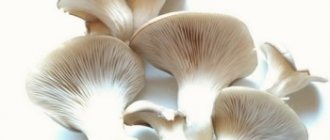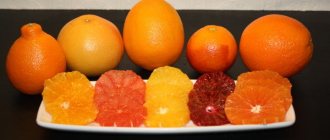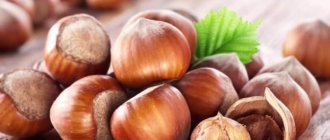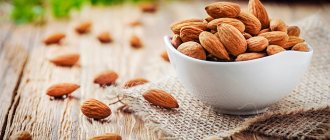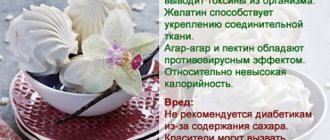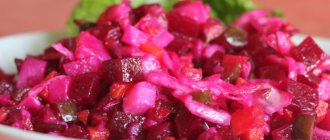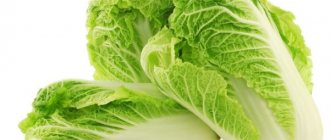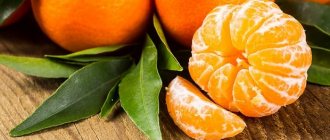The benefits and harms of lard for the human body
This product has a beneficial effect on the body due to the content of a complex of vital vitamins and minerals. Pork lard is useful for maintaining visual acuity and strengthening bones.
Its chemical composition contains antioxidant substances that can stop the development of aging processes. These same microelements make the walls of blood vessels more elastic, which means that lard can be called a means of preventing cardiovascular pathologies.
In addition to its benefits, this product can cause serious damage to the health of a person with high blood cholesterol levels or individual intolerance to animal fats.
In some cases, the use of lard in nutrition should be approached with caution, without excluding it from your diet completely, but also without abusing this product. For example, with liver cirrhosis or chronic cholecystitis, excess fat intake can trigger a relapse of the disease.
For men's health
Salted pork lard, the calorie content of which may be the main obstacle to its inclusion in the daily menu, is rich in selenium. This substance serves as an activator of the synthesis of androgens - male sex hormones.
Regularly eating lard will help restore potency, improve sperm quality, and increase libido.
It is men who have a greater risk of developing heart attacks and strokes after 40 years of age, so taking this product daily in moderate quantities may be an additional protective factor.
For women
Substances contained in lard are involved in metabolic and hormonal processes. The antioxidant properties of this product help women maintain a beautiful, slim figure longer, control their weight, fight dry skin and premature wrinkles, and prevent the development of malignant diseases.
Pork lard, fresh or salted, has an immunostimulating effect, so its use during the season of respiratory diseases increases the body's protective functions.
For pregnant women, vitamin A, contained in the layer of pork fat, and vitamin D are especially valuable. These substances are indispensable for the complete absorption of calcium and phosphorus, without which the normal development of the fetal musculoskeletal system is impossible.
In the absence of contraindications, experts recommend that women eat a little lard even during lactation. Its high calorie content increases breast milk production.
For children
Lard will also be beneficial at an early age if you give it to your child little by little. The product consists of unsaturated fatty acids, which provide the body with energy and stimulate brain activity.
Unlike sausages and semi-finished products, which many children like, lard does not contain chemical additives, preservatives, or flavor enhancers, and is therefore considered safer.
In addition, it is better digested and absorbed.
What are the benefits of lard?
Let's also talk about the beneficial properties of lard.
- This product contains a fairly large amount of vitamins, which has a positive effect on the immune system.
- Promotes muscle growth.
- Helps in regenerating damaged skin.
- Salo is digested quite quickly and easily.
- This product can also be used externally for various diseases.
- It can be stored for a very long time without spoiling.
Who shouldn't have lard?
Despite all the positive properties, you should refrain from eating lard if there are a number of disorders.
First of all, this product is contraindicated in patients suffering from excess cholesterol levels in the blood, which can lead to the development of:
- atherosclerosis and, as a consequence, cerebrovascular accidents, heart diseases;
- diabetes mellitus;
- obesity.
The following fact is paradoxical: it is not forbidden to eat a little lard for those who are struggling with excess weight, but those people who suffer from the third degree of obesity are not recommended to consume this product even in minimal quantities. The fact is that such a high-calorie product with obvious metabolic disorders can complicate the patient’s situation.
Even a small piece of lard can trigger another weight gain in obesity.
Salted pork lard (the calorie content of the product depends on the method of preparation) is considered the most useful, in comparison, for example, with smoked lard, but it should not be consumed in case of inflammatory and chronic pathologies of the gastrointestinal tract and liver:
- gastritis and stomach ulcers;
- inflammation of the duodenal mucosa;
- pancreatitis;
- colitis;
- reflux esophagitis;
- cholecystitis and cholelithiasis.
It is worth noting that lard has a choleretic effect, so if you have a history of disorders of the liver and gallbladder, it is advisable to exclude it from the diet in order to avoid serious complications. It is not advisable to consume it in salted form for a person suffering from edema or hypertension, since excess salt intake into the body increases the load on the kidneys.
Calorie content of lard
It is important for every person who monitors their health and weight to know how many calories are in bacon. This indicator may differ, as it depends on the method of preparing the product. As practice shows, its average calorie content is about 750 kilocalories per 100 grams of product.
How many calories are in pork lard?
There is no exact data on which type of lard is the healthiest. According to experts, fat that is not heat-treated or salted is considered the most beneficial for the body.
The benefits of raw pork fat depend on the animal’s age, weight, and health status.
There are 798 kilos of calories in 100 grams of raw pig lard. This product can be used for home salting, smoking, and pickling.
How many calories are in salted lard?
A favorite delicacy for many is salted lard; it is characterized by a high calorie content:
- with meat – 780 kcal per 100 grams;
- without meat - 620 kcal per 100 grams.
Despite such high indicators, the salty product is considered healthy. It contains a large amount of vitamins, macro- and microelements necessary for the human body.
Calorie content of boiled lard
Quite often, lovers of deli meats prefer boiled lard.
This dish is characterized by tenderness and pleasant taste. During boiling, the product is saturated with spices and herbs. You can also stuff it with garlic or vegetables if desired. During cooking, pig fat melts and, due to a change in structure, decreases in volume by almost half. Unlike smoked and salted, boiled delicacy is considered more dietary. The calorie content of 100 grams of the dish is 460 kcal.
How many calories are in smoked and fried lard?
Smoked lard is a flavorful, tender meat product with a pleasant texture and a lot of calories.
It can be prepared in different ways using high temperature, smoke, spices. A smoked delicacy with a layer of meat is considered especially tasty; it often has a pleasant golden crust. Since smoked fat has a high calorie content, nutritionists recommend limiting its consumption. Excessive consumption of delicacies with layers of meat can have a detrimental effect not only on your figure, but also on your health. The calorie content of the snack ranges from 770 to 860 kcal per 100 grams of fat.
Some gourmets enjoy fried bacon or cracklings. During frying, the energy value of fat decreases, so people trying to lose weight should remove it from their daily diet. There are 764 kilos of calories in 100 grams of cracklings.
Calorie table
Table of calorie content of lard in different forms per 100 grams:
| Product | Calorie content (kcal) |
| Fresh | 798 |
| Salty with meat | 780 |
| Salty without meat | 620 |
| Boiled | 460 |
| Smoked | 770 – 860 |
| Fried | 764 |
Composition and nutritional value
It is worth paying attention to the fact that lard is not any fat of animal origin without exception. A product that can be eaten must have a high density and solid form.
Lard is fat reserves formed during a period of intensive nutrition. Such fat deposits are direct sources of energy for the animal, consisting of triglycerides and polyunsaturated fatty acid residues.
The nutritional value of lard is high. Considering that this product is completely free of carbohydrates, it is difficult to find a more high-calorie and filling product than this one. Per 100 g of lard there are approximately 750 kcal, which is 30-35% of the daily intake of an adult. The same amount contains at least 70 g of pure fat and 3 g of protein.
It is also worth noting the rich chemical composition of lard:
- vitamins A and E;
- sodium;
- calcium;
- selenium;
- iodine;
- chromium;
- iron;
- copper;
- potassium;
- chlorine.
Despite the relatively high calorie content of lard, it is important to understand that it can have different effects on the body of women and men. For example, men can consume lard in larger quantities, because their daily calorie intake exceeds women's by 400-600 units.
In addition, the nutritional value of lard is not clearly established. It depends on the form in which the product will be used. It is also important to consider not only the method of its preparation, but also the conditions under which the animal is kept.
In the salty
In this form, lard has the maximum calorie content. 100 g of this product contains an average of 810-820 kcal. Salted lard is in no way inferior to the fresh product in terms of concentration of nutrients. But the most important thing is that, unlike boiled, fried, smoked, arachidonic acid is completely preserved.
In fresh and raw
It is impossible to determine with 100% accuracy which lard is the most nutritious. Unlike a product that has been cooked or salted before consumption, raw lard is considered more suitable for a healthy diet. A 100 g piece of fresh pork fat contains 790-795 kcal.
This value may vary depending on:
- the age and health of the animal;
- pig weight;
- location of the sebaceous area on the body (abdomen, thigh, back).
Raw lard, as a rule, is not purchased for fresh consumption. This product is salted, smoked, pickled or rolled into jars on its own. Rendered pork fat (this kind of lard is called lard) is often replaced with sunflower oil. For example, you can fry potatoes with lard and prepare dressings for first and hot dishes.
Due to the absence of chemical additives, such fat is not considered harmful to the body, subject to reasonable consumption.
Boiled
The calorie content of boiled pork lard is almost 1.5 times lower than salted lard. After heat treatment, this product acquires a specific delicate taste and softness. Due to prolonged cooking, lard absorbs the aromas of spices and seasonings, becoming more spicy and fragrant.
Boiled lard melts strongly during cooking under the influence of high temperatures, as a result of which it partially loses its nutritional value and volume by about 40-50%. And although boiled lard cannot be called a dietary product, due to its relatively low calorie content, it can occasionally be consumed by people with chronic gastrointestinal diseases.
A similar indicator of nutritional value is lard baked in foil.
Smoked
Unlike raw and salted lard, smoked lard has a pronounced taste and aroma. Making such a product at home is quite difficult. Smoked lard, which is sold in stores, is considered the least healthy when compared with other types of pork fat. The product contains 780 kcal in every 100 g.
Any smoked meats, including lard, have many contraindications for consumption. During the processing of the product, complex oxidizing agents, flavors, and dyes are used, which do not provide any benefit to the body and often turn out to be carcinogenic. Smoked lard, like any other, can have a meat layer.
Fried
After any heat treatment, lard loses a significant amount of its beneficial properties. Many people prefer fried cracklings, and sometimes they can be included in the menu in minimal quantities. Also, we must not forget that such lard is no less high in calories (750 kcal per 100 g).
With a layer of meat
Salted pork fat has an impressive calorie content, but if it contains a meat layer of even minimal thickness, the number of calories will decrease. In 100 g of such fat there are from 700 to 750 kcal.
Compound
The product contains, in addition to a complex of vitamins, unsaturated fatty acids. These substances are necessary for biochemical reactions to occur in the body.
Be sure to read: Horse meat: benefits and harms, calorie content per 100 grams, how to cook correctly, is horse sausage healthy?
Importance of nutrients for life:
- Arachidonic acid is an unsaturated fatty acid that is involved in the activity of the brain and nervous system. Regulates the functioning of the liver and adrenal glands. Participates in the processes of cholesterol metabolism.
- A complex of polyunsaturated fatty acids (palmitic, oleic, linolenic) - participate in the functioning of the endocrine system and in the processes of regulating hormonal levels.
- Vitamin A is involved in the formation of its own collagen to maintain healthy skin, and also supports human vision. Participates in building immune defense.
- Vitamin D is a building material for the musculoskeletal system and a catalyst for the human body’s processing of phosphorus and calcium.
- Vitamin E is involved in the formation of red blood cells and supports the natural renewal of epithelial cells.
The product contains, in addition to a complex of vitamins, unsaturated fatty acids.
Table of useful substances per 100 g of product:
| Item name | Content in mg, mcg | Content in % |
| Sodium | 22 mg | 0,8 |
| Potassium | 15 mg | 0,4 |
| Phosphorus | 12 mg | 1 |
| Calcium | 3 mg | 0,3 |
| Iron | 0.2 mg | 1 |
| Copper | 9 mg | 0,04 |
| Selenium | 5.7 mcg | 4,2 |
| Vitamin A | 10 mcg | 1 |
| Vitamin E | 1.6 mcg | 7 |
| Vitamin D | 1.7 mcg | 16 |
Selenium is an important trace element for maintaining the immune system. Garlic also contains it in significant quantities.
Therefore, the long-standing culinary tradition of eating bacon with garlic, especially in extreme living conditions, supports human health and strengthens the immune system.
Application for weight loss
In the fight against excess weight, this product is a very effective remedy.
Due to the content of a complex of unsaturated amino acids, lard acts as an irritant for the digestive system, stimulating the release of bile, which is necessary to start the active work of the digestive system. At the same time, you don’t have to worry about the caloric content received: normally it is consumed within a few hours of wakefulness.
To lose weight with lard, you should only consume it fresh. It is important to eat the product little by little, without bread and with a minimum amount of salt. If there are no contraindications, you should eat no more than 30 g of fresh lard on an empty stomach. This meal cannot be considered a full breakfast.
To lose weight, consuming lard is not aimed at saturating the body, but at activating the digestive system.
There are no carbohydrates in lard, which means that the product can be used in protein diets. It will provide the body with the amount of energy necessary to maintain physical activity every day. In addition to weight loss, regular consumption of small amounts of lard guarantees an improvement in the condition of the skin and hair.
Diet
A weight loss system based on the consumption of pork fat alone was developed by the Polish nutritionist Kwasniewski. The program demonstrates good results in weight loss when combined with strength training.
Throughout the entire period of the diet, you should avoid foods high in carbohydrates:
- croup;
- pasta;
- of bread;
- potatoes;
- fruit;
- sweets.
The weight loss program is designed for 7-10 days. During all this time, one consumption of black bread is allowed. To achieve the desired result on a fat diet, it is important to consider the ratio of daily calories and energy expenditure.
Uses of lard
A tasty delicacy of animal origin is used not only in cooking as an independent product and component of various dishes. It was introduced into the practice of traditional medicine a long time ago, and simply excellent results are obtained. Let's get acquainted with some interesting recipes for the unconventional use of lard for certain diseases.
Weeping eczema. Prepare an ointment from natural ingredients, one of which is subcutaneous pork fat. Take 2 tbsp. unsalted fresh lard, previously melted, place in a bowl. Add a couple of raw egg whites beaten with a broom. Stir. Season the mixture with 1 tbsp celandine juice. and 100 g of crushed nightshade berries. Stir again. Leave the ointment for several days in a dark place. Then apply it to the areas of skin affected by eczema until it is completely cured.
Joint problems. If you are worried about pain in the areas of bone articulation, use the recipe for an effective mixture. You will need two ingredients: old lard and natural bee honey. Pass the first through a meat grinder and mix with the second component. The proportion is taken by eye. However, there should be more lard than beekeeping product. Every day before going to bed, smear the sore joints with the prepared mixture, wrap them on top with cling film or special paper for compresses, then with a woolen cloth. In the morning, remove the compress.
Impairments in joint mobility are treated by regularly rubbing a mixture prepared from rendered lard (100 g) and table salt (1 tbsp) into problem areas. A warming bandage must be applied on top. The compress must be left for several hours.
If you are caught off guard by a toothache, an ordinary slice of salted lard will help, only without the skin and, in fact, salt. It must be placed between the cheek and gum so that it fits against the diseased tooth. After 15-20 minutes, the pain will certainly disappear.
How to use lard correctly and in what doses
Before deciding to lose weight with the help of this product or its regular consumption, you should make sure that there are no absolute contraindications for the body. Lard will not cause any harm if you eat 20-30 g of it every day before your first meal.
It is worth noting other recommendations from nutritionists on the consumption of lard:
- Pork fat does not go well with white bread, since both components have a high glycemic index. Eating lard with bread made from rye or whole grain flour will bring maximum benefits.
- To speed up the process of fat absorption, garlic, mustard or horseradish should be served with the appetizer. In addition, such seasonings will give the lard a very piquant taste.
- Pork lard is often used as a snack for alcoholic drinks. It is important to consider that pork fat has enveloping properties, so it can protect the walls of the stomach. The greasy snack prevents the rapid absorption of alcohol.
Harm of lard
In some cases, the product we are considering may do a disservice to the body. If you consume it without knowing the norm, you can easily gain excess weight in a short period of time, since lard is a source of saturated fat and cholesterol. For the same reason, this approach to eating lard will result in the deposition of cholesterol plaques on the walls of blood vessels.
It was already mentioned above that with pathological changes in the liver and malfunctions of this organ, fat can also harm the body. Therefore, having such problems, as well as experiencing discomfort in the gastrointestinal tract, it is better to limit the use of the product.
You should not get too carried away with fried lard. Not only does such food turn out to be too fatty, but according to some sources it is also enriched with carcinogenic substances. And the latter, as is known, provoke the development of cancer.
That's probably all. Follow all the precautions, and then lard will be for the benefit of you and your loved ones!
More articles on the site
- Holidays in Israel
- 10 ways to show someone you're in love with them
- The most unsuitable partners for different zodiac signs (Aries-Virgo)
- DIY Valentine's Day gifts
- Pizza with red fish
- 5 Zodiac Signs That Are Attracted by Sarcasm
- Turmeric - beneficial properties and contraindications
- 4 design ideas for a beautiful hallway
- Historical sights of Georgia for tourists
- Advantages and criteria for choosing an electric boiler
- Useful tips for housewives: how to save time in the kitchen
- Honeymoon for each zodiac sign
Selection and storage of lard
The most useful is pork fat without salt, which has not undergone heat treatment. However, raw lard cannot be stored for long. In order for the product to remain suitable for as long as possible, it is important to know what kind of lard to choose, how to prepare it correctly and in what conditions to store it.
When making a purchase, you should pay attention to the following product characteristics:
- The thickness of the lard must necessarily exceed 3 cm.
- The color of high-quality fresh pork fat is white, with a slight pinkish tint allowed. Yellowness flashing on the surface indicates that the product is stale.
- Good lard should not be tight and tough.
- Cuttings from the sides and back of the animal have the highest value due to their pronounced pleasant taste. Pork fat from the cheeks and neck is tougher, so it costs less, despite the presence of meat layers.
- Fresh lard should not stick to your hands.
- A slight smoky smell is normal as it occurs after the skin has been oiled.
Salted pork lard, the calorie content of which does not allow it to be consumed excessively, can be stored for long-term storage:
- pickle;
- smoke;
- preserve;
- freeze.
The last method is the simplest and least labor-intensive:
- The product must be rinsed under the tap, then the lard must be wiped off with paper towels.
- Before putting the piece in the freezer, wrap it in a paper or plastic bag.
After freezing, which does not deprive the lard of its beneficial properties, it can be thawed for further baking, frying or salting.
To brine fresh or thawed pork fat:
- It is necessary to adhere to the following proportions: for 1 kg of lard use 5 tbsp. l. salt and 1 tbsp. l. black pepper.
- If desired, you can add garlic and aromatic spices. In order for a piece of bacon to be saturated with the aromas of seasonings, deep cuts are made in it, into which garlic plates or spices are placed.
- The salting process lasts for 4-5 days: during this entire time, the lard should be stored in an enamel container in the refrigerator.
- Ready salted lard is wrapped in paper and cellophane bags and stored at a temperature from +2 to +6 °C.
There is no strict ban on eating lard due to its high calorie content. It is advisable to give preference to fresh or salted products in reasonable quantities.
How many calories are in 100 grams of boiled pork lard?
Boiled lard is a common dish on the modern table. It gained its popularity for its mild taste and tenderness that appears after heat treatment. During the cooking process, lard can absorb the aroma of spices, acquire a spicy flavor and a pleasant warm hue.
Depending on the recipe, boiled lard can be pre-stuffed with garlic, carrots and pepper before cooking. Lard is cooked in polyethylene so that the product does not lose its taste and nutritional value. An analogue of lard boiled in water is baked lard in foil.
IMPORTANT: During the cooking process, lard melts and therefore loses part of its nutritional value and decreases in volume by approximately 40-50%. So we can say that boiled lard is a “more dietary” product than salted or smoked lard.
| Product | Belki g. | Fats g. | Carbohydrates g. | Calorie content |
| Boiled lard 100 grams | 2 | 40-50 | 0 | 460 kcal |
Boiled lard
Harm from eating salted lard
Women apply thin strips of pork fat to their breasts for mastitis.
Despite all the indispensability and accessibility of this product, there are categories of people who are prohibited from consuming lard for medical reasons:
- people with impaired enzyme production are not able to process this product;
- people with varying degrees of obesity;
- patients with chronic pancreatitis and cholecystitis;
- people with allergies to the product.
Only severe chronic diseases are a contraindication to the use of salted lard for food.


